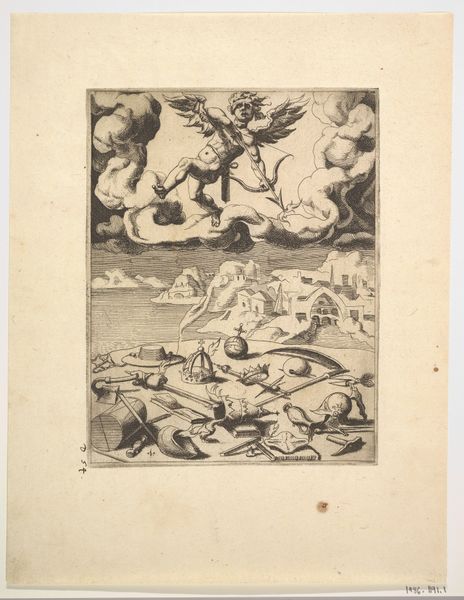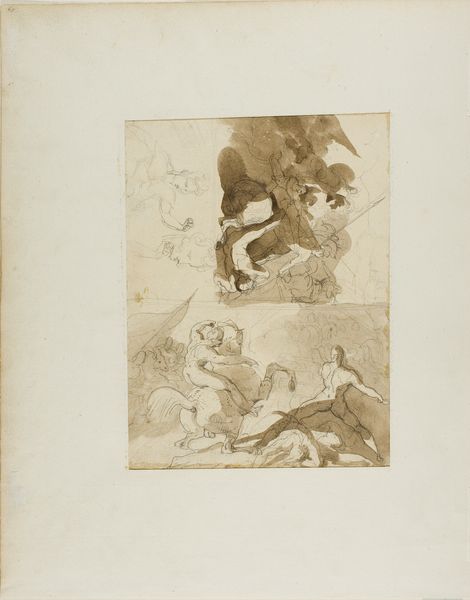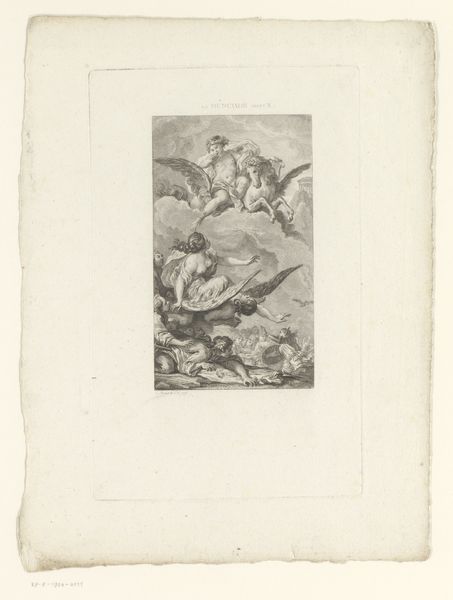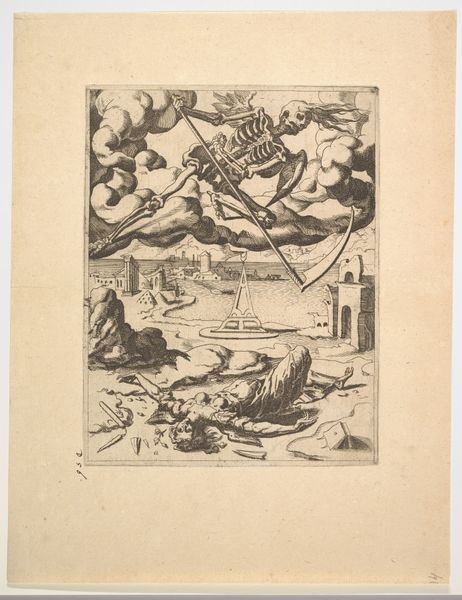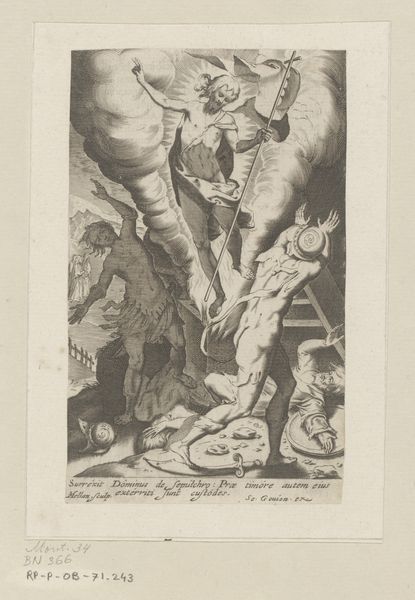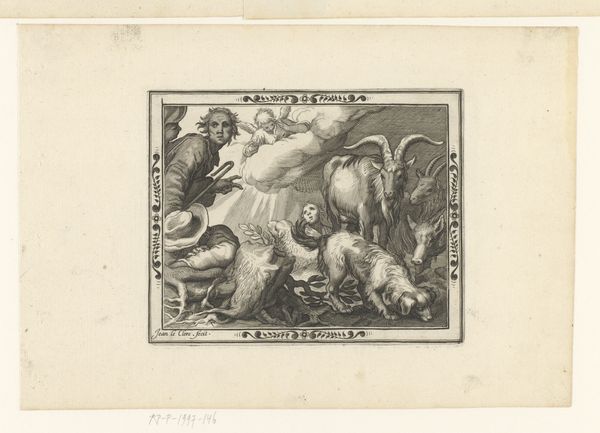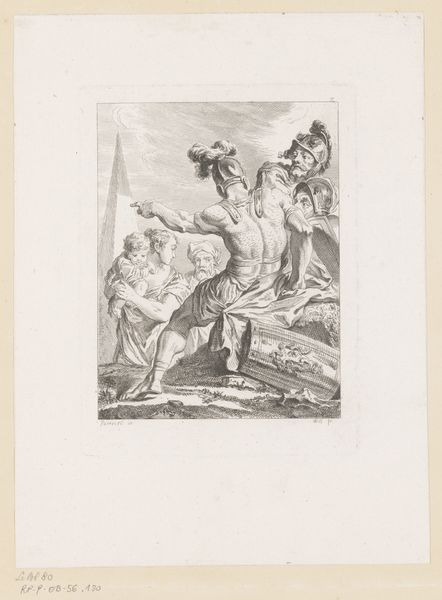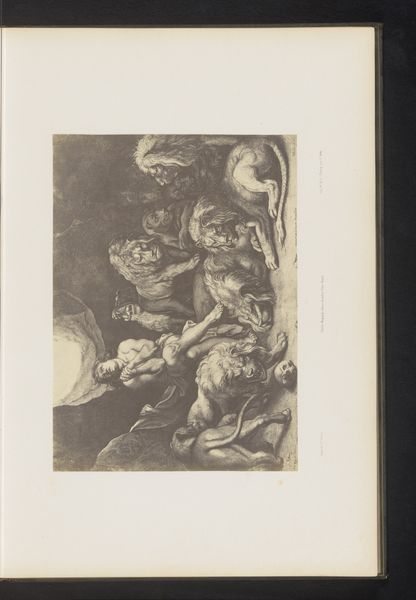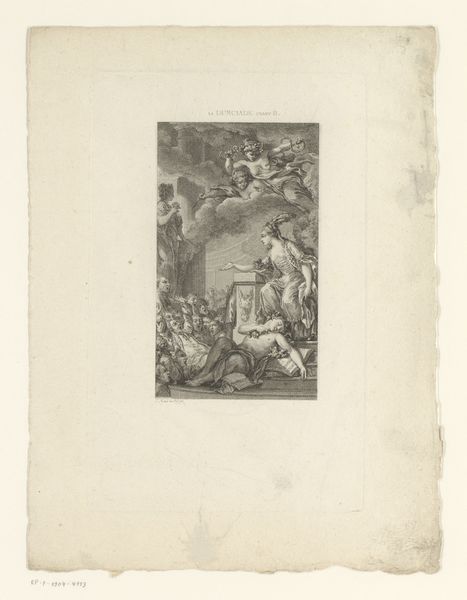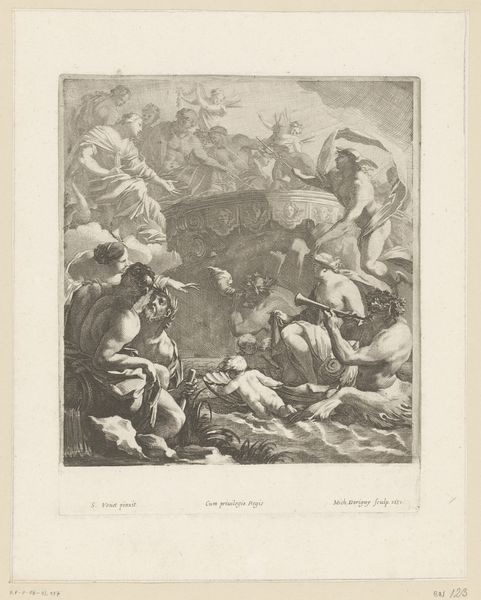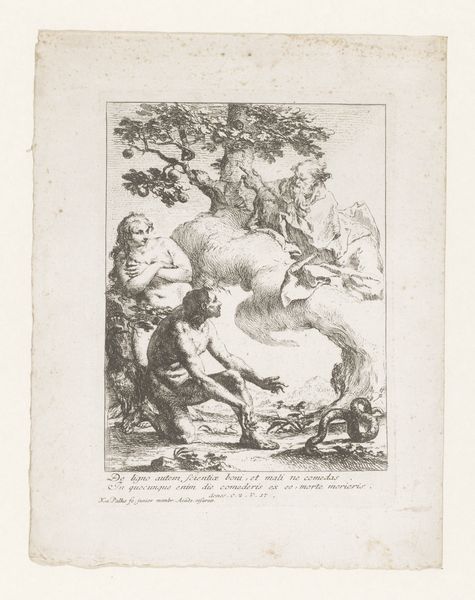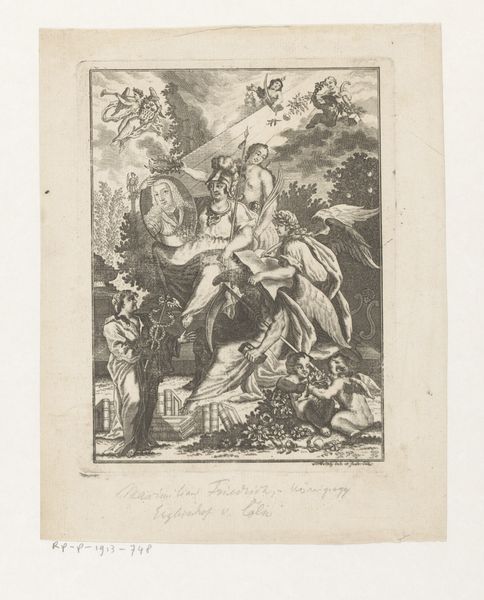
The Triumph of Chastity from The Triumphs of Petrarch 1543 - 1553
0:00
0:00
drawing, print, etching, engraving
#
portrait
#
drawing
# print
#
etching
#
death
#
figuration
#
men
#
line
#
history-painting
#
italian-renaissance
#
engraving
#
male-nude
Dimensions: Plate: 9 x 7 in. (22.8 x 17.8 cm) Sheet: 13 7/16 x 10 7/16 in. (34.2 x 26.5 cm)
Copyright: Public Domain
Curator: This is "The Triumph of Chastity from The Triumphs of Petrarch," an engraving by Dirck Volckertsz Coornhert, dating from about 1543 to 1553. It's currently held in the collection of the Metropolitan Museum of Art. Editor: My first impression is one of stark contrast. A figure dominating the upper portion and another prostrate below, all rendered with such fine lines. The etching creates a fascinating tension. Curator: It’s part of a larger series illustrating Petrarch's "Triumphs," allegorical poems about the victories of various virtues. The historical context is significant, showcasing how classical themes were revived and reinterpreted during the Renaissance. Note how Chastity triumphs over Love. Editor: Right, but let’s consider the means. Engraving like this demands intense labor. Coornhert’s mastery over the burin to produce these delicate lines speaks volumes about artisanal skill in that era, a time when prints democratized access to images for a growing audience. We need to consider printmaking as labor and also means of mass distribution. Curator: Absolutely. And it's important to remember that printmaking was often a collaborative effort. Coornhert was working in the orbit of Maarten van Heemskerck who produced designs that he, and others, then turned into prints. This reveals how workshops operated, sharing skills and knowledge. It underlines the social networks of artistic production. Editor: And let's look at the figure of Chastity herself, holding those bound instruments. The symbolic nature and material construction, tell an important story about value and virtue being presented at that historical point. Were they merely emulating a tradition or reinforcing ideologies of the elite through a mass medium? Curator: That tension between the medium's potential for broader dissemination and its use to perpetuate existing power structures is a really insightful way to view the engraving. The nude figure of the vanquished Love could certainly ignite contemporary conversation. Editor: Yes, looking at that form and that posture raises many questions. Thinking through labor, through access, through how it landed for the audience. These sorts of elements help recontextualize value. Curator: Understanding art as social dialogue. A beautiful sentiment to leave our listeners with. Thank you for the valuable points and consideration! Editor: The value in exploring the process is critical to contextualize social impact and its potential audience! Thank you.
Comments
No comments
Be the first to comment and join the conversation on the ultimate creative platform.
